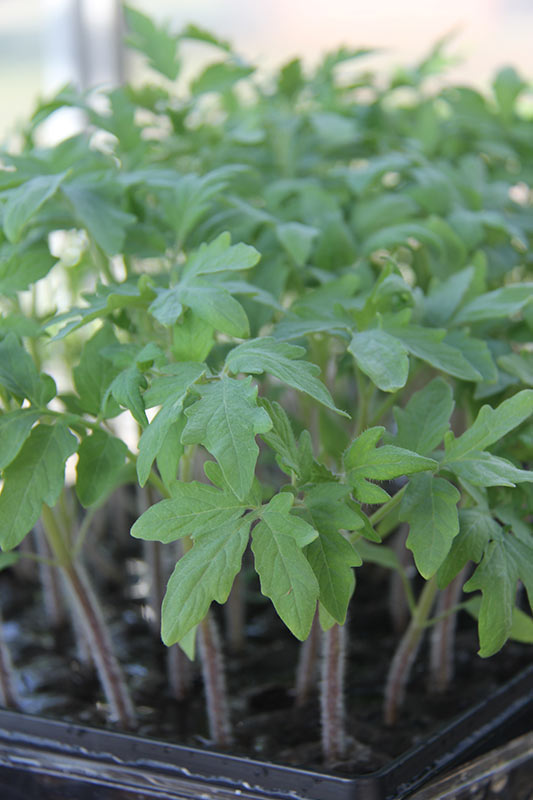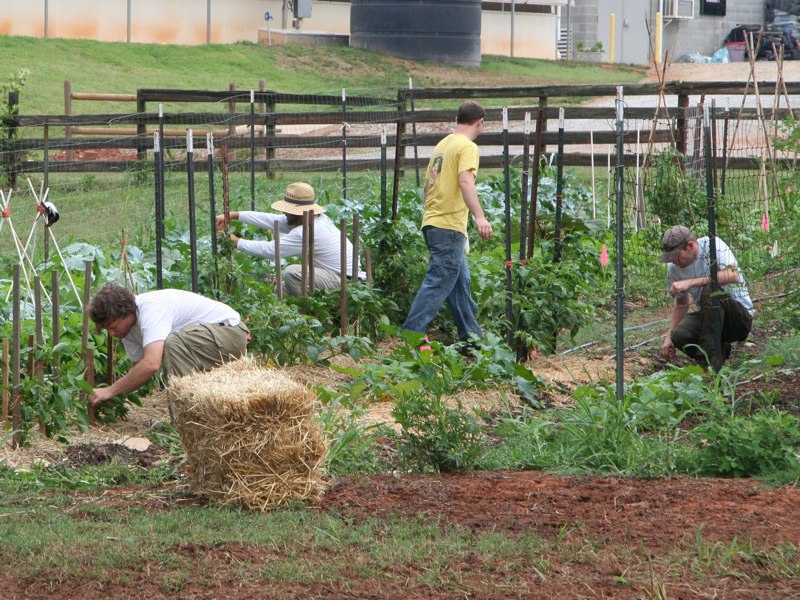

By Sharon Dowdy
University of Georgia, College of Agricultural and Environmental Sciences
Growing plants from seed can save gardeners money and vastly increase the varieties that can be grown in a backyard garden. Gardeners can grow several transplants for the price of a few, store-bought plants, and the selection of varieties for sale is often limited.
Seed should be started six to eight weeks prior to transplant time. For example, if the average last frost date in your area is April 15, sow tomato seed inside in late February or early March.
To grow transplants, start with good quality seed from a reliable source. Quality seed is true to a cultivar or variety name and does not contain weed seed, insect casings, soil particles or plant pulp.
Choose seed varieties that will mature before frost, survive heat and tolerate present growing conditions in your area. Purchase just enough seed for this season. (Seed can be stored from year to year, but germination and seedling vigor will decline with age and improper storage conditions.)
Read the seed package closely and make sure the seed was packed this season. The packet will also provide information on how to space seed within a row, how deep to sow the seed, how many days it will take for the seed to germinate and more.
Water is critical for germination, or the process of the embryo emerging from the seed. Without water, the seed will remain dormant.
The amount of water is also critical; too much will cause seeds to rot and too little will cause them to die.
Plant seed in a growing media that is fine, not chunky or lumpy. Growing media could be soil, sand, a soil-less mix or a commercial potting soil. Fine growing media helps the seed have good contact with the media.

The growing media also needs to drain well enough to meet the seed’s oxygen needs. If the media is too heavy or too wet, the seed will not have the oxygen it requires, and germination may slow down or stop.
Water seed with a mist nozzle or a hand-held spray bottle to provide light, even, gentle moisture without disruption. The seed can be covered with a thin layer of vermiculite or peat moss to help ensure good seed-to-media contact and to help prevent the embryo from drying out.
Keep humidity high by covering your pots or flats with a clear humidity dome or plastic wrap, or enclosing plants in clear, plastic bags. Remove plastic when seedlings emerge.
Some seed types require light to germinate, others require darkness and some have no preference. If a seed requires light, sow the seed on the soil surface. If a seed requires darkness, cover the seeds lightly with a layer of fine peat moss or vermiculite.
Temperature affects the number of seeds that germinate as well as how fast the seed germinates. Some seed have a very specific temperature range for germination, while others will germinate over a broad range of temperatures.
A good rule of thumb is to plant in soil that is 65-75 degrees Fahrenheit. Place a thermometer probe in the middle of the container or flat to measure the soil temperature.
Any container can be used for starting seed as long as it drains, is deep enough for good root development and is sanitized prior to use. Plastic inserts, flats and trays with clear, fitted dome covers can be purchased at garden stores.
Growing seedlings in individual cells or containers reduces damage to roots and shock to the seedlings when they are later transplanted in the garden.

Place seed in a warm location that provides bright, indirect light and good air circulation. Most home gardeners don’t have a greenhouse, so once the seed germinates, supplemental light from a light stand positioned 2 to 3 inches above the seedlings must be provided. As the seedlings grow, raise the lights, keeping them 2 to 3 inches above the seedlings.
Keep the lights on 16 hours a day. Without supplemental light, plants will grow weak and spindly and stretch toward a window or other light source.
As they grow, seedlings will need to be thinned, leaving the remaining plants enough space to grow and develop. Crowded plants will compete for water, light and nutrients. Weak or unwanted seedlings can be snipped off with scissors or pinched off at the media level.
After the first true leaves develop, the new transplants need to be prepared for their new home in the garden. This preparation process is called “hardening off.”
Move the transplants outside to a shady location and gradually increase the amount of sunlight they receive over a period of several days. Repeat daily, extending the length of time by an hour that plants remain outside, until the plants have acclimated to the brighter, drier outdoor conditions.
Start this process one to two weeks prior to planting the new plants in the garden. Transition plants gradually, as extreme changes can slow their growth or kill them.
For more information, see UGA Extension Bulletin 1432, “Starting Plants from Seed for the Home Gardener,” at extension.uga.edu/publications/detail.cfm?number=B1432.
(Sharon Dowdy is a news editor with the University of Georgia College of Agricultural and Environmental Sciences.)
Related articles








Be the first to comment